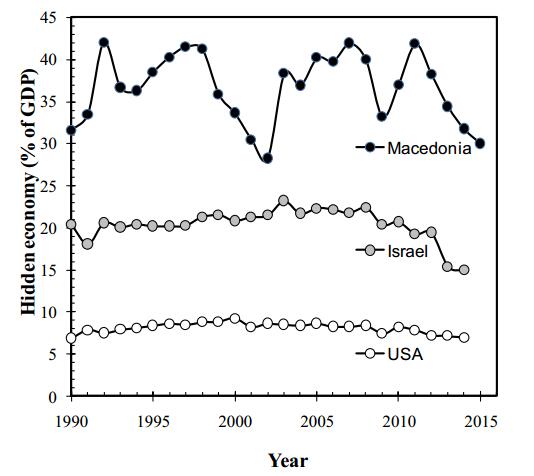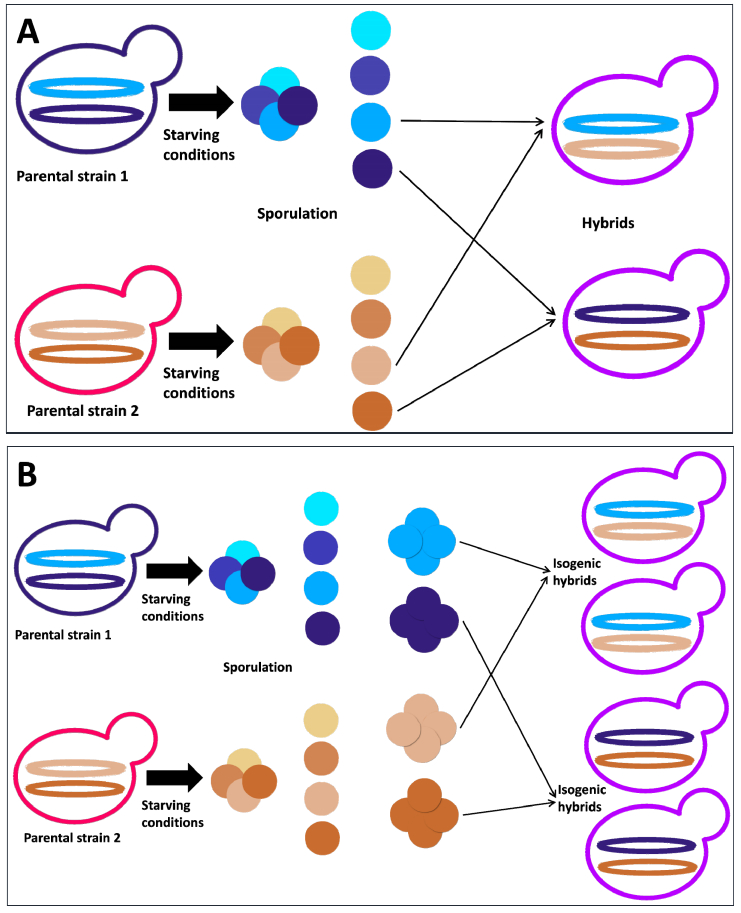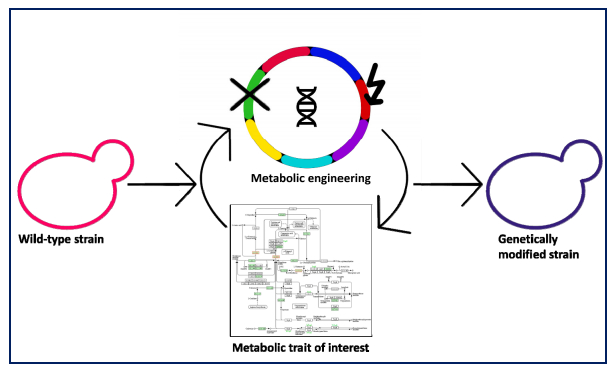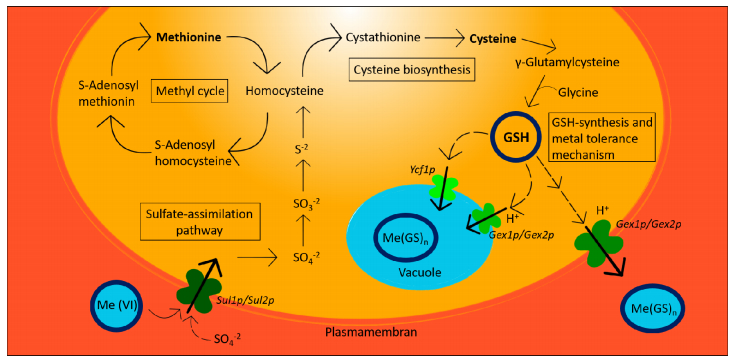Glutathione (GSH) is the most abundant non-protein thiol in living organisms. Due to its important antioxidant role, it is widely used in medicine, as a food additive, and in the cosmetic industry. Recently, GSH has received growing attention in winemaking because of its ability to control oxidative spoilage damage and to protect various aromatic compounds. Indeed, GSH concentration in wine is highly variable and several factors are involved in its regulation, ranging from grape must to yeast fermentation activity. This short review aims at highlighting the common genetic strategies, useful for obtaining wine yeasts with enhanced GSH production, paying particular attention to the adaptive evolution approaches. Moreover, other strategies, such as random mutagenesis, metabolic engineering and hybridization have been briefly reviewed with a stress on both their strengths and weaknesses in terms of actual feasibility and acceptance by wine consumers.
1.
Introduction
The part of the economy named hidden (shadow) economy presents particular interests for researchers in the last several decades, since it influences significantly the development of the entire economy and reflects several deficiencies of the modern economies, both of big and small countries (Schneider and Buehn, 2018; Novkovska, 2016). Since it is present in all countries (although with different size) it results in escape of huge part of economic effects from the domain of regular economy (Williams and Schneider, 2016). For small countries with weak economy the effect of hidden economy can be particularly harmful, due to the exhaustion of resources required for development of regular economy. Goel et al. (2019) demonstrated using the data for United States for the period 1970–2014 that the hidden economy can spur or retard economic growth of the country, by interacting in different ways with the formal economy. Thus, in the period before the Second World War, hidden economy had notably negative effects on the total economy, while after the Second World War positive effects are observed, attributed to the synergetic effect between regular and hidden economic sector. Symbiotic effect mainly consists in providing of goods and services for workers on hidden market at lower prices, thus reducing the price of the workforce for regular economy. Such an effect under war conditions is suppressed due to the strong control (dominant military economy) separating regular from hidden economy. Therefore, the policies for coping with hidden economy have not to be simply directed to its reduction but also to establishing some kind of symbioticf connection between them. Effect of shadow economy on the total economy is particularly important when countries are exposed to severe external influences (Novkovska, 2016).
Relationship of the hidden economy with various other phenomena has been exhaustively studied by numerous researchers. Particularly important is the link with the taxation burden. In general, high taxes are considered as one of the main generators of hidden economy (Giles and Caragata, 2001). Specifically, it has been shown that progressive taxation leads to an increase of the size of hidden economy (Neck et al., 1989). Therefore, taxation system has to be optimally planned in order to avoid the risk of high participation of the hidden in total economy (Mazhar and Méon, 2017).
As a particularly important issue for modern economy, the link between the shadow and green economy attracts growing interest (Markandya et al., 2013; Smit and Musango, 2015; Mirhosseini et al., 2017). Biswas et al. (2012) studied the link between shadow economy and pollution. Their theoretical model predicts that the harmful effect of shadow economy on environment as monitored by the increase of pollution can be reduced by efficient control of the level of corruption. The model has been tested using panel data from over hundred countries for the period 1995–2005. The issue is also studied in the broader context of sustainable development (Popescu et al., 2018).
It has been affirmed by numerous researchers that energy efficiency policies have to play particularly important role in the transition to green economy (Matraeva et al., 2019; Ringel et al., 2016; Yushchenko and Patel, 2016). Therefore, detailed studies on the energy efficiency if different sectors are expected to appear. Relationship of the hidden economy to the energy efficiency deserves particular attention. Efficient methods appropriate for such studies are to be constructed. In that direction, recently, we have proposed a sophisticated model for determination of the size of shadow economy based on the energy consumption data in conjunction with the data for the size of regular economy (Novkovska and Novkovski, 2018). This model allows extraction of a parameter describing relative efficiency of the sector of hidden economy with respect to the regular one. Based on this method, comparison between hidden economies in Macedonia and Croatia has been done in (Novkovska and Dumičić, 2018). Using the above mentioned model, relative efficiencies of hidden economy for various countries can be determined.
In this work we determine evolution of the hidden economy in the period 1990–2017 using official data for regular economy and electricity consumption for various countries. Comparison of the results is done and the issue of connection between the green and shadow economy is discussed from various aspects.
2.
Materials and method
2.1. Theoretical model
In this work the sophisticated method of total electricity consumption proposed in (Novkovska and Novkovski, 2018) have been used for the determination of the efficiency of hidden economy. Short presentation of the method is provided below.
Size of the hidden economy (HY) for a given year (t) is determined using following explicit expression:
where HY(0) is the size of hidden economy in the base year (n = 0), which has to be calculated using appropriate calibration method. The model contains two parameters having specific well defined meaning: μ is the well known elasticity of electricity consumption (E) with respect to GDP (Y) and r is the relative efficiency of the hidden economy with respect to the regular economy. The parameter r is crucial for our analysis, since it reflects the level of efficient use of energy in hidden economy.
Elasticity of electricity consumption (μ) in the simplest model is assumed to be roughly 1. Next improvement of the model consists in using the value of μ from known data for energy consumption and size of regular economy. Since the parameter μ appears in the exponent of the expression (1), the obtained results are rather sensitive to the value of this parameter. Thus, inaccurate determination of the parameter, can lead to excessive oscillations that do not reflect realistic variation of the observed phenomenon. Specifically, elasticity μ in this work has been determined by linear regression model using the expression:
The second parameter, the relative efficiency of the hidden economy with respect to the regular economy (r), is of particular importance for this study. It provides additional insight into the issue of hidden economy, producing not only a measure of the extent but also a measure of the energy efficiency in the hidden sector. Further, this can be connected to the ecological aspects due to different degradation level of environment in the production of energy required for a unit product in these two sectors of the economy.
In previous works we determined the parameter r and the value of the size of hidden economy in the base year (HY(0)) from the values of HY(t) in two separate years, correspondingly. In this work the calibration method is changed in order to obtain more accurate calibration, reflecting values over a given period for which reliable values obtained by an independent method are available. Such information has been extracted from the work of Schneider and Buehn (2018), where mean values, along with maxima and minima for different countries for the period 1996–2014 are presented. Values of r and HY(0) have been determined using least square method for a combination of deviations of the mean values, maxima and minima, correspondingly, between the results obtained in Schneider and Buehn (2018) and those obtained by the method used min this work. Specifically, for a given set of values of r and HY(0), values of HY(t) for the period 1996–2014 were calculated and their mean value (HYm), maximum (HYmax) and minimum (HYmin) determined. Using mean value (HYm0), maximum (HYmax0) and minimum (HYmin0) from the calibration set, following combination was constructed:
In the next step, r and HY(0) were varied until obtaining minimum value of s2. Practically, the following procedure is performed. First, a row of values of HY(t) for the considered period (1996–2014) is calculated using a pair of reasonable values for r and HY(0). Second, calculations are repeated with variable HY(0) until obtaining the local minimum (goal s2 = 0). Third, r is varied until obtaining minimum of s2. Second and third step are repated until their variations for a single step decrease below the required estimation error (0.001). Values obtained after the sast step preformed are used as optimum estimated values. Then, using the optimum values of r and HY(0), the values of HY(t) for the entire studied period have been calculated, based on the expression (1). In this way, the calculated values for the size of hidden economy reflect the same general behavior as in (Schneider and Buehn, 2018) but give more detailed information on the fluctuations typical for each separate country and provide information for more larger period. In addition, substantially new information on the relative efficiency of the hidden economy with respect to the regular economy is provided, which has not been previously determined by any other method for estimating hidden economy. In this work we put emphasize on the analysis of parameter r in connection with the green economy issues.
Values of the size of hidden economy (H, relative to the total economy) have been calculated as:
Data used in calculations of the size of hidden economy (H) are those for total electricity consumption (E) and for the size of regular economy (Y) GDP PPP (converted to international dollars using purchasing power parity rates) of the given country taken from World Bank database (Databank) (http://databank.worldbank.org/data/home.aspx). Therefore, the initial series of data are harmonized and reliable, thus providing a strong basis for correct determination of the quantities derived from these sets of data. Particular advantage of the method is that analytical expression for determination of H is used instead of linear approximations usually considered in regression models. In addition, number of the variables is small (only two, Y and E) and they are meanings (economic and physical) are well defined and precisely measured and reported by official statistics.
3.
Result
In this work calculations were made for selected economies different in size and in economic development level (Macedonia, Albania, Croatia, Bosnia and Herzegovina, Israel, Czech Republic, Hungary, Switzerland and United States).
Results for three representative countries of the listed above are shown in Figure 1. Macedonia is an example of developing economy with high extent of hidden economy and its strong variations due to external factors (Novkovska, 2016). Israel represents the case of medium level of hidden economy, while USA is a typical example of low hidden economy participation in the total economy.
Particularly important for this work are values of the parameter r (relative efficiency of the hidden economy with respect to the regular economy). Values of this parameter for the countries covered by this study are shown in Table 1. Values of elasticity of electricity consumption for the same countries (μ) are also shown in the same table. Range of the expected values of r can be settled between 0 and 1. Namely, r is by its nature a positive value (contribution in total GDP by an economic sector). On the other hand, it is not expected hidden sector to be more efficient that the regular one, since it operates using more limited resources than the regular. It is seen that the obtained values (Table 1) cover almost entire range of expected values. Highest value (0.704) is obtained for Croatia, while the lowest one (0.153) is obtained for USA. The lowest value for USA can be easily explained. Namely, in this case regular economy there exhibits exceptionally high productivity and hence efficient use of energy that cannot be approached in hidden economy sector. In Macedonia the high value of 0.618 reflects the fact that the regular economy itself did not efficiently use the energy.
4.
Discussion
General feature to be extracted from the Table 1 is that the efficiency of hidden economy (r < 1) is lower than that of the regular economy. Above reflects the fact that only well organized economy of large scale, dominantly present in regular economic sector, can provide conditions for high productivity and efficient use of all resources, particularly energy. In some sense, the obtained figure for the relative efficiency of the hidden economy (r) with respect to the regular economy can represent a measure for general energy efficiency of this sector. Since this value is lower than unity in all studied case, it is to be concluded that the energy efficiency of the hidden sector is lower than that of the regular economy. The above finding raises another issue connected to the presence and extent of the hidden economy – decrease of the efficient use of energy. Thus, the hidden economy not only reduces the state's fiscal revenues, but also decreases the total energy efficiency of the economy as a whole. Therefore, in creating policies aimed to cope with the hidden economy, both aspects—the size and the energy efficiency are to be taken into account.
It is difficult to explain the variations in r, since it reflects the structure of the hidden economy, which is, contrary to the regular, unknown. However, a general feature of this parameter can be elucidated. Namely, it is expected hidden economy to do not follow the development of regular, and hence the value of r is expected to be lower for more developed countries. A general trend in this direction can be observed in Table 1. However, the link being weak, one can conclude that there are multiple factors affecting the estimated values of r, which requires more detailed studies in future on the issue of he efficiency of hidden economy.
First, it is to be concluded that the measures leading to the reduction of hidden economy will also provide significant increase of the efficient use of energy and expectedly various other resources. However, reduction of the extent of hidden economy is process that is going rather slowly. Therefore, in order to accelerate the pace towards the green economy, interventions inside the hidden economy sector are required in order to increase its productivity. Approaches used in (Brown and McGranahan, 2016) for the case of informal economy, can be applied also for the hidden economy, in order to identify solution that would lead to activities conform to the green economy of the future. Particularly useful for the development of green economy, can be the increase of the production of electricity for renewable sources on local level (Bushur et al., 2018). Greener production of electricity on local level is expected not only to decrease the pollution during the electricity production itself, but also by advancing the production facilities and consequently the productivity of shadow sector. This way, conditions for reduction of hidden economy by its accelerated transition to regular one could be provided. Namely, more productive the economic activity becomes, much easily the policy measures for its transfer from hidden to the regular sector can be implemented.
Therefore, interventions in the sector of the hidden economy aiming at greener production of energy appear to be particularly important for the ongoing transition to green economy.
5.
Conclusion
Using sophisticated electricity consumption model for hidden economy, both the evolution of the size of hidden economy and the relative efficiency of the hidden economy (r) with respect to the regular economy for a given economy can be determined using available and easily attainable sets of data. The ratio r varies from one country to another, but in all studied cases its value is lower than unity, indicating that the efficiency of hidden economy is lower than that of regular economy. Therefore, the presence of hidden economy has negative impact on the transition to green economy. Otherwise said, reduction of hidden economy is required in order to progress towards greener production, or shortly—less shadow is more green is. Both reduction of the size of hidden economy and increase of the relative efficiency of the hidden economy with respect to the regular economy are to be attained in order to accelerate the transition to green economy. Measures aiming at attaining greener production of electricity on local and household level have potential to lead to particularly beneficial effects.
The main contribution of this work to the fields of studies of hidden economy and that of green economy is the establishment of a link between the extent of hidden economic activities and outputs, from one hand, and, from the other, the possibilities for further development of green economy. It has been demonstrated that relative efficiency of the hidden economy (r) with respect to the regular economy varies is large interval, meaning that there are significant differences between the countries. Simultaneously, it has been found that the high extent of hidden economy is in connection with low energy efficiency, which suggests that the policies aiming at reduction of hidden economy and that of increase of the energy efficiency have to be established and developed further in coordinated manner.
Acknowledgements
The work presented in this paper did not receive any funding from any source.
Conflict of interest
The author declares that there is no conflict of interests regarding the publication of this paper.










 DownLoad:
DownLoad:







